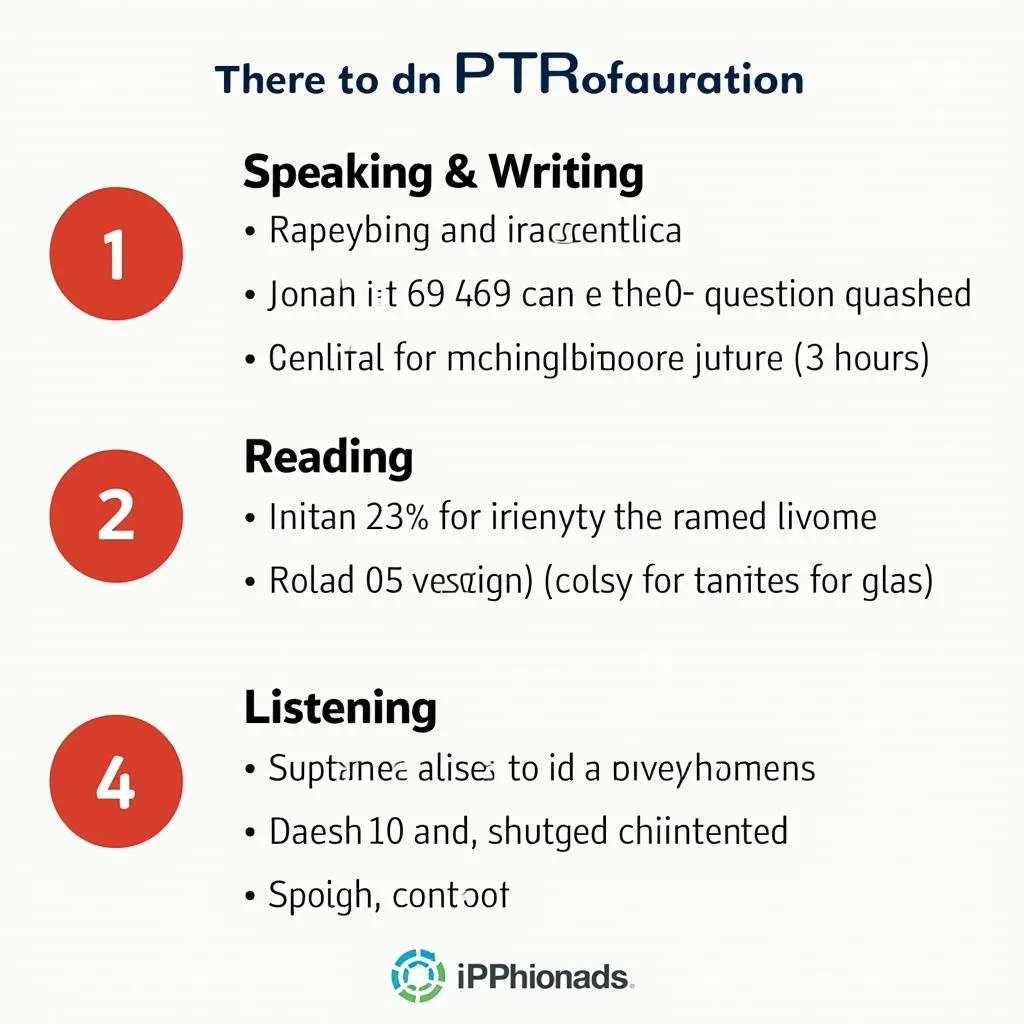The Pearson Test of English Academic (PTE Academic) is a computer-based English language proficiency exam designed to assess the readiness of non-native English speakers for academic study. Understanding the test structure is crucial for achieving success in this challenging assessment. Let’s delve into a comprehensive overview of the PTE Academic test structure to help you prepare effectively and boost your confidence.
Test Format and Duration
The PTE Academic test is divided into three main parts: Speaking & Writing, Reading, and Listening. The entire test takes approximately three hours to complete, with no breaks between sections. This format requires candidates to manage their time effectively and maintain focus throughout the exam.
 PTE Academic Test Structure Overview
PTE Academic Test Structure Overview
Speaking & Writing (54-67 minutes)
The Speaking & Writing section combines these two skills, testing your ability to express yourself verbally and in writing. This integrated approach reflects real-life academic scenarios where you might need to discuss and write about various topics.
Key question types in this section include:
- Read Aloud
- Repeat Sentence
- Describe Image
- Re-tell Lecture
- Answer Short Question
- Summarize Written Text
- Write Essay
For a more detailed breakdown of each section, including time allocations and scoring, check out our PTE academic test section-wise breakdown.
Reading Section (29-30 minutes)
The Reading section evaluates your ability to understand written English in an academic context. It includes a variety of question types that test different aspects of reading comprehension.
 PTE Reading Question Types
PTE Reading Question Types
Common question types in the Reading section are:
- Multiple Choice (Single Answer)
- Multiple Choice (Multiple Answers)
- Re-order Paragraphs
- Reading: Fill in the Blanks
- Reading & Writing: Fill in the Blanks
To excel in this section, familiarize yourself with these question types and practice time management strategies. Our PTE reading module question types overview provides in-depth information on each type of question you’ll encounter.
Dr. Emily Thompson, a renowned PTE expert, advises: “The key to mastering the Reading section is to practice active reading techniques and improve your vocabulary in academic contexts. Don’t underestimate the power of skimming and scanning skills.”
Listening Section (30-43 minutes)
The Listening section assesses your ability to understand spoken English in academic settings. This section includes a variety of audio and video materials, simulating real-life lecture and discussion scenarios you might encounter in an English-speaking academic environment.
Question types in the Listening section include:
- Summarize Spoken Text
- Multiple Choice (Single Answer)
- Multiple Choice (Multiple Answers)
- Fill in the Blanks
- Highlight Correct Summary
- Select Missing Word
- Highlight Incorrect Words
- Write from Dictation
To improve your performance in this section, practice active listening and note-taking skills. These abilities will help you capture key information efficiently and accurately.
 PTE Listening Skills Practice
PTE Listening Skills Practice
Integrated Skills and Scoring
One unique aspect of the PTE Academic test is its integrated skills approach. Many tasks require you to use multiple language skills simultaneously, reflecting real-world academic scenarios. For example, the “Summarize Spoken Text” task in the Listening section also assesses your writing skills.
The scoring system in PTE Academic is based on a scale of 10-90 points. Your performance is evaluated using both human raters and automated scoring technology, ensuring a fair and consistent assessment of your language abilities.
Dr. Michael Chen, a PTE preparation specialist, notes: “The integrated nature of PTE Academic tasks can be challenging, but it also provides a more authentic assessment of your English language skills. Focus on developing a holistic approach to language learning rather than isolating individual skills.”
Preparation Strategies
To prepare effectively for the PTE Academic test, consider the following strategies:
- Familiarize yourself with the test format and question types
- Practice time management for each section
- Improve your academic vocabulary
- Develop strong note-taking skills
- Practice speaking clearly and confidently
- Enhance your reading speed and comprehension
- Work on your listening skills with various accents
For more specific tips on improving your performance, check out our PTE speaking module confidence-boosting tips and PTE reading tips and tricks.
Conclusion
Understanding the PTE Academic test structure is the first step towards achieving success in this challenging English proficiency exam. By familiarizing yourself with the format, question types, and integrated skills approach, you can develop a targeted preparation strategy that addresses all aspects of the test. Remember to practice regularly, focus on time management, and work on improving your overall English language skills. With dedication and the right approach, you can master the PTE Academic test structure and achieve the score you need for your academic pursuits.
For official tips and strategies directly from the test makers, don’t forget to review the PTE reading module official tips. Good luck with your PTE Academic preparation!